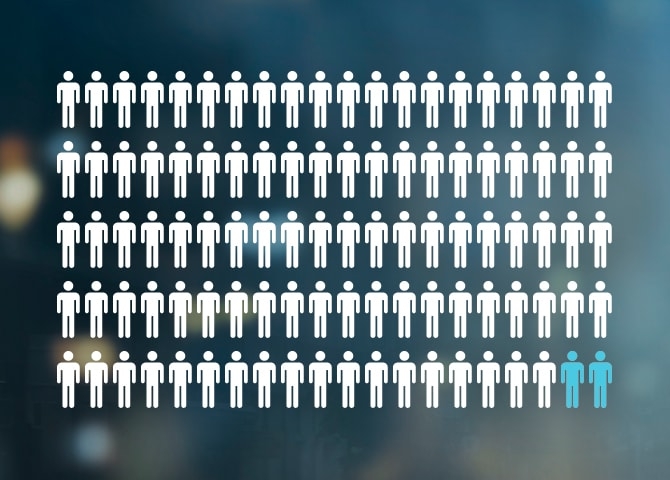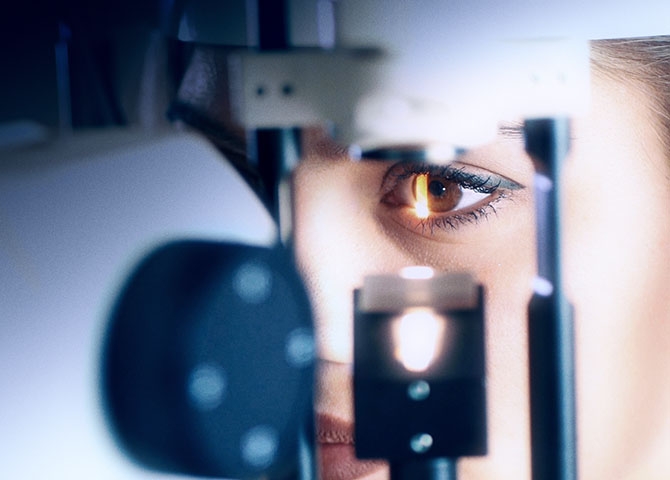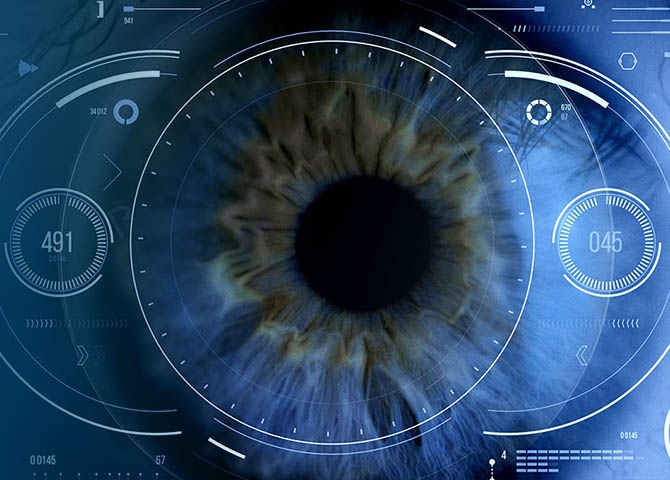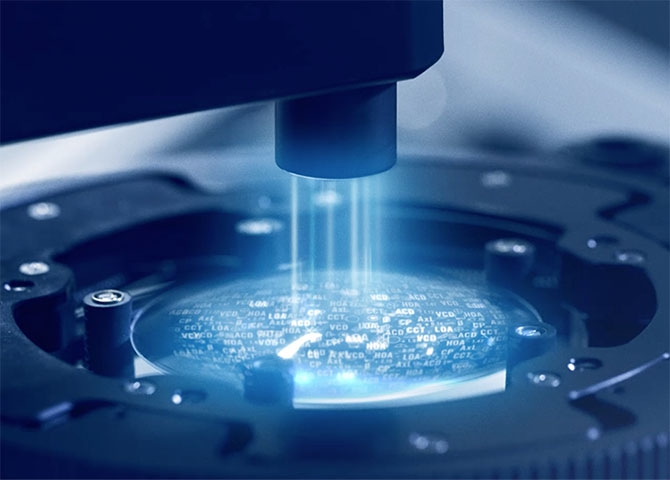Every eye is different
Today, most lenses are manufactured using a standard vision test with just four standard prescription values as input for the lens calculation process. In this case standard values taken from the reduced eye model are used for the biometrics of the individual eye. These standard values suit only 2% of eyes. This has consequences for how precisely the lens can be tailored to the needs of the user’s eyes.

Only 2% fit
When combining the different standard eye parameters of the reduced eye model, it ends up matching just 2% of eyes.
Why biometric precision ensures sharper vision
As light travels through the eye, it is refracted to hit the fovea centralis and form a sharp image on the retina. All elements the light passes through play central roles in creating vision. Since they have different refractive indexes, each must be determined precisely.


The era of the biometric intelligent glasses
Moving away from an old norm based on limited biometric knowledge
At Rodenstock, we are constantly striving to pioneer how precisely lenses can be crafted. Reaching a whole new level of biometric precision has taken us many years. On our journey, we have faced some major challenges.

Traditionally, progressive lenses are manufactured using input from standard prescription values. To realise our ambition, we needed more precise data on the biometric parameters of the eye. This led us to the launch of our DNEye® Scanner, which was the first step towards attaining true biometric precision.
With the DNEye® Scanner, we were able to scan thousands of data points in each individual eye. From these data points we were then able to successfully build a set of more than 80 biometric eye parameters.

The next major challenge was to unlock the value of our biometric parameters. For thousands of hours we worked with advanced mathematical modelling, constantly pushing the scientific boundaries of lens calculation to transform the more than 80 biometric eye parameters into concrete input for the lens calculation process.
In the end, we were able to create a complete biometric model of the individual eye. This biometric eye model enables us to precisely hit the sharp vision centre of every individual eye.

With this biometric model, we were ready to take on the final challenge: Transferring the biometric parameters directly into the crafting of the lenses. Contrary to the rest of the industry, where biometric data is often measured yet seldom used in lens manufacturing, our biometric eye model provided us with concrete input we could use to manufacture our lenses.
To make use of the biometric eye model’s precision in creating progressive lenses, we engineered a way to digitally transfer the input from the DNEye® Scanner into the crafting of the lens.

The result
B.I.G. VISION™ FOR ALL and Biometric Intelligent Glasses
This was the birth of two milestones in our company history:
- B.I.G. VISION™ FOR ALL: our philosophy that recognizes that every person and eye is unique.
- Our pioneer: B.I.G. Biometric Intelligent Glasses, the first high-precision lenses made using an exact biometric model of each eye measured by a DNEye® Scanner - marked the beginning of the biometric era in ophthalmic lenses. We call these lenses B.I.G. EXACT™.

NEW: B.I.G. EXACT™ Sensitive
The world’s first spectacle lenses optimised for individual visual sensitivity and biometry
With B.I.G. EXACT™ Sensitive, We have reached a new evolutionary stage. We discovered that visual sensitivity is highly individual and linked it to the individual eyes’ biometry. We used that to further develop our state-of-the-art biometric lens calculations and design lenses that are optimised precisely for each individual, marking the next evolution in B.I.G. VISION™.
